Hits: 152
NORTHEAST UP 11% IN INFECTIONS IN WEEK. NEW YORK STATE HOSPITALIZATIONS UP.

ARS-CoV-2 is having a mixed impact across the globe.
The WHO is tracking more than 100 subvariants of Omicron, and each country has a different makeup of “subvariant soup,” but two are winning the race: XBB and BQ.1.1.
Couple this with changing behaviors and different immune histories (which wave hit and when; booster uptake), and country-to-country comparisons are getting harder than ever.
But I’m up for a challenge. Here is a snapshot of the current landscape, which is changing quickly.
International trends
In Western Europe, behavior drove the current wave. Thankfully, cases have peaked as it looks like the virus ran out of social networks to follow, but Omicron subvariants (and specifically BQ.1.1) are brewing below the surface. Whether cases continue to descend, plateau, or begin to increase is directly dependent on the number of “susceptible” people the virus can find—the million dollar question.
All eyes are still on Germany, as hospitalizations “for COVID-19” are the highest they have ever been. (Take this with a grain of salt, though, as hospitalizations in Germany have historically been low. So admissions are high, but not outrageous compared to other countries.) The current surge is largely attributed to Oktoberfest as a superspreader event and the fact that Germany’s fall booster rate among 60+ year olds is one of the lowest in Europe thus far.
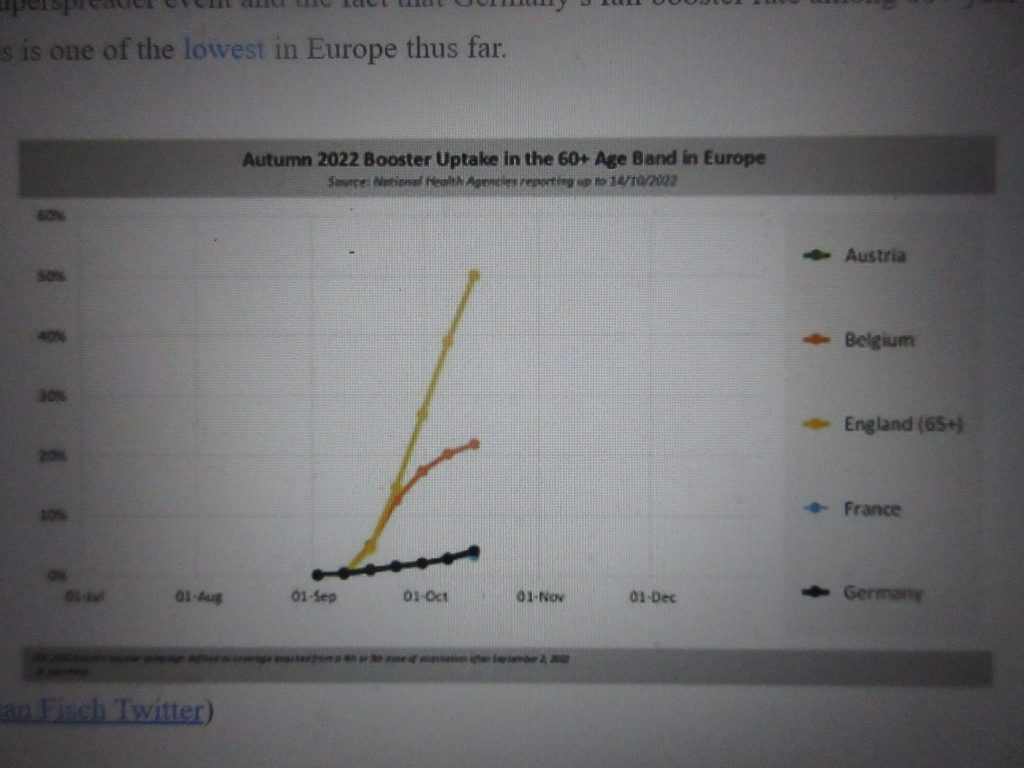
Also concerning is the quickly rising number of ICU patients in Germany and the fact that 30% of ICU patients are on a ventilator, which is high. In addition, some German hospitals have called for help as a majority of their staff are out sick. In all, excess deaths in Germany are high and increasing.

Moving to Southeast Asia, an Omicron subvariant—XBB—is causing a substantial infection wave (as opposed to behavior). Specifically, Singapore is getting hit hard with a high rate of reinfections due to waning immunity. However, only 15 people total are in the ICU (out of 6 million people). This amazing progress is attributed to:
- A highly vaccinated and boosted population, and
- A massive BA.2 wave (as opposed to a BA.1 wave, like in the U.S.). This may help as BA.2 is more closely related to XBB than BA.1.
The Singapore Ministry of Health predicts they will peak in mid-November at around 15,000 cases per day—an infection peak much larger than their BA.5 wave but smaller than their first Omicron wave. Their death rate is already far below Germany’s and the U.S.’s, regardless of high case rates. I expect it to remain there.
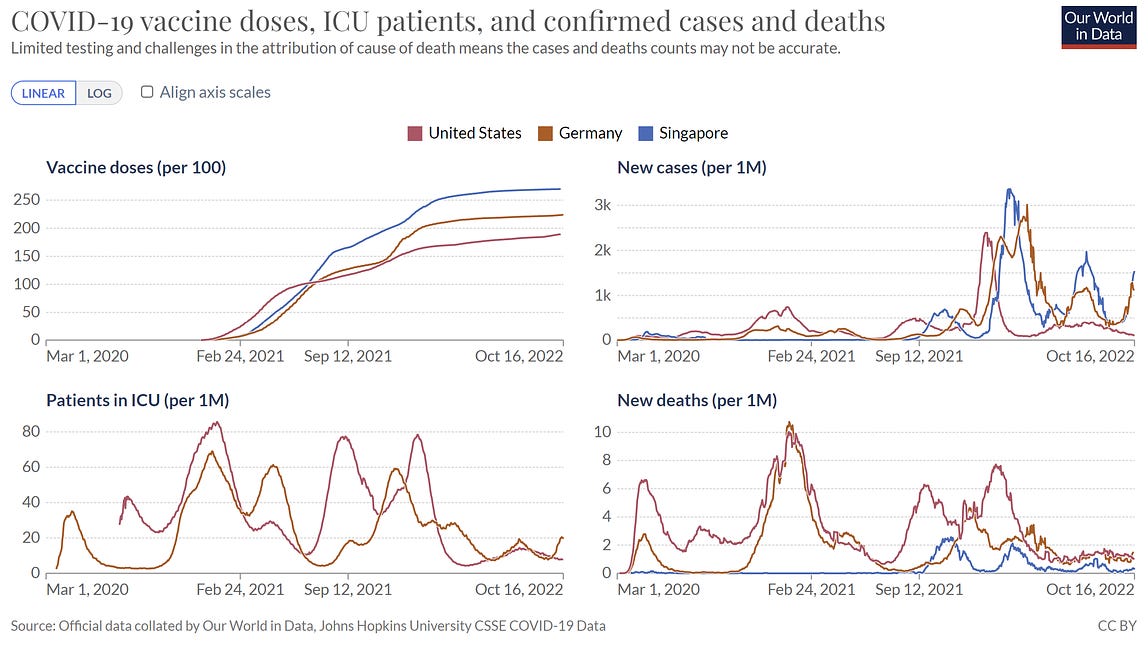
Then there are places like Japan, Australia, and South Korea that have similar growth rates of BQ.1.1 and XBB. These places will be particularly interesting to watch and see which subvariants win the battle. Or, for the first time in this pandemic, we may witness co-circulation—two subvariants of equal strength circulating at the same time.Time will tell.
United States
It’s incredibly difficult to predict what will happen in the U.S. given that we have such a different immune landscape than other countries. We only have 14.8 million Americans boosted with the fall vaccine—far below what’s needed to divert 100,000 deaths this winter. According to recent models, we are still on track for a fall/winter wave.
The CDC now updates COVID-19 data weekly, so we are getting bursts of information rather than a continuous story line.
From last Friday’s new CDC data update, Northeast has the highest proportion of BQ.1.1, which jumped from less than 1% to 11% of cases. Increasing subvariants are causing an uptick in wastewater. In fact, the Northeast is experiencing the highest concentration of SARS-CoV-2 in wastewater since last winter.
Wastewater trends during pandemic. Yellow=Northeast; Pink= South; Green= West; Purple=Midwest. Source: Biobot Analytics
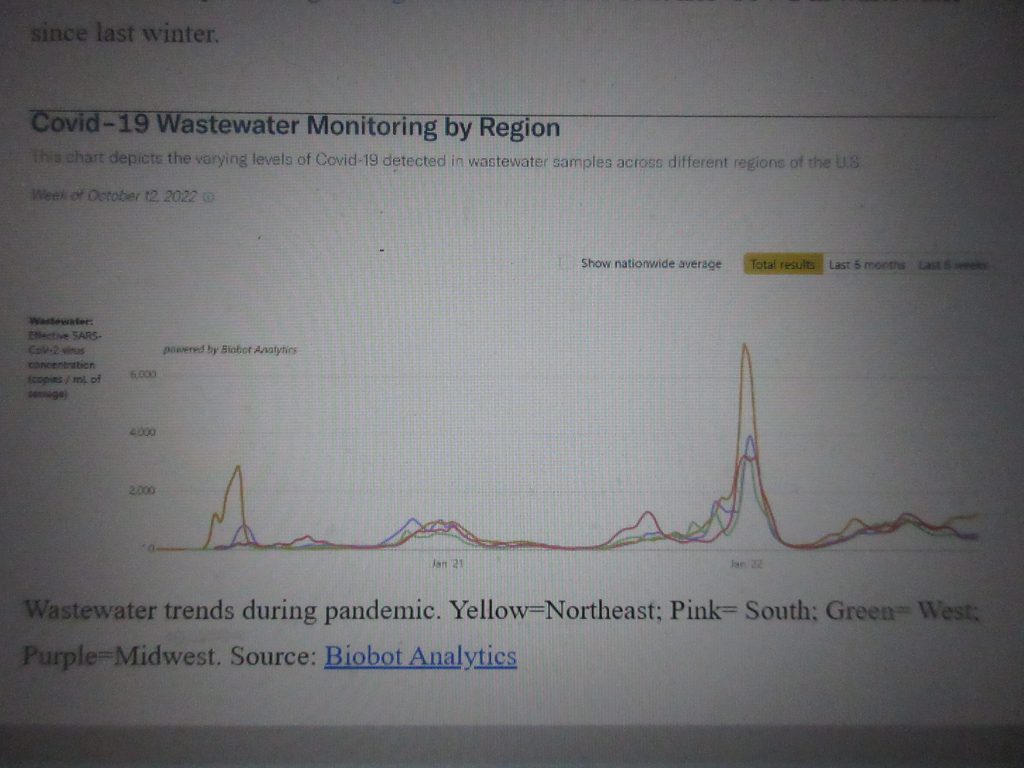
New York, specifically, has the highest proportion of BQ.1.1—an estimated 25% of cases—in the country. Perhaps more concerning is that it is causing an uptick in hospitalizations. (Keep in mind that reported cases remain flat; these no longer accurately reflect transmission due to at home antigen testing.)
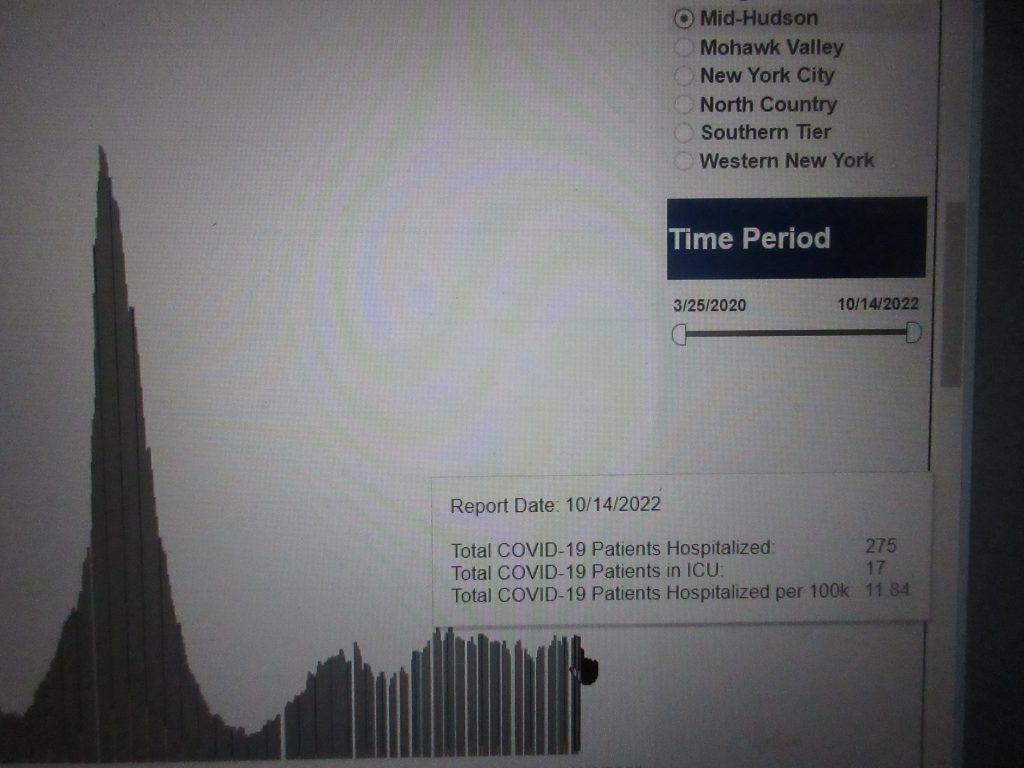
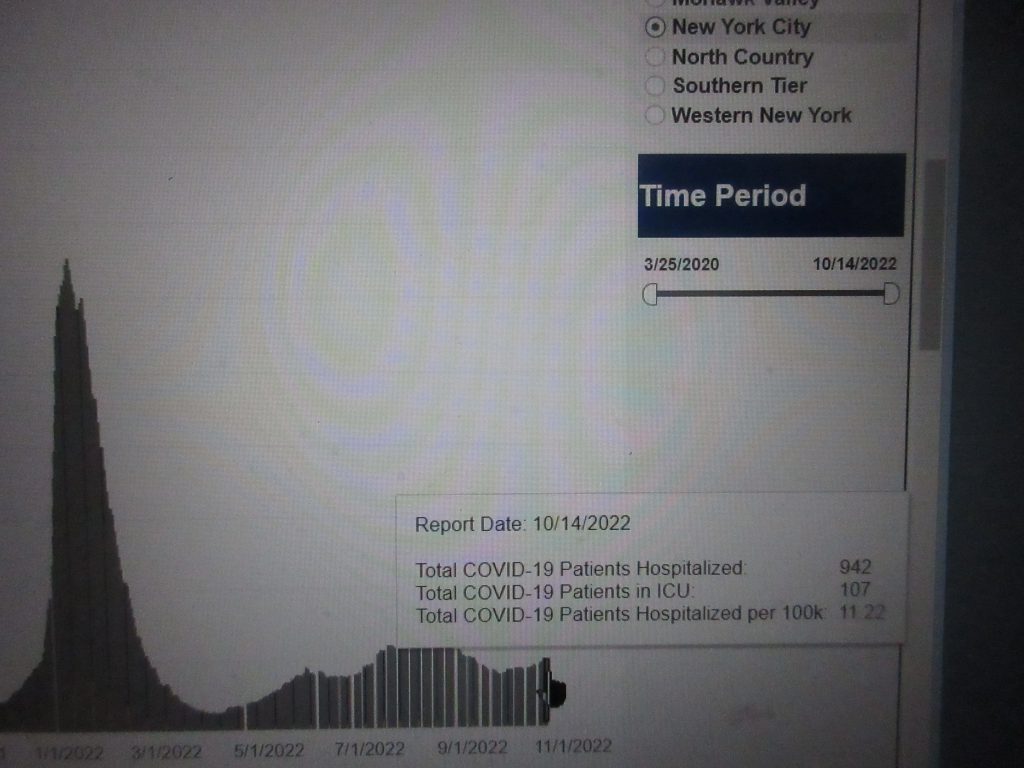
DAILY HOSPITALIZATION SUMMARY New York State (Source here)
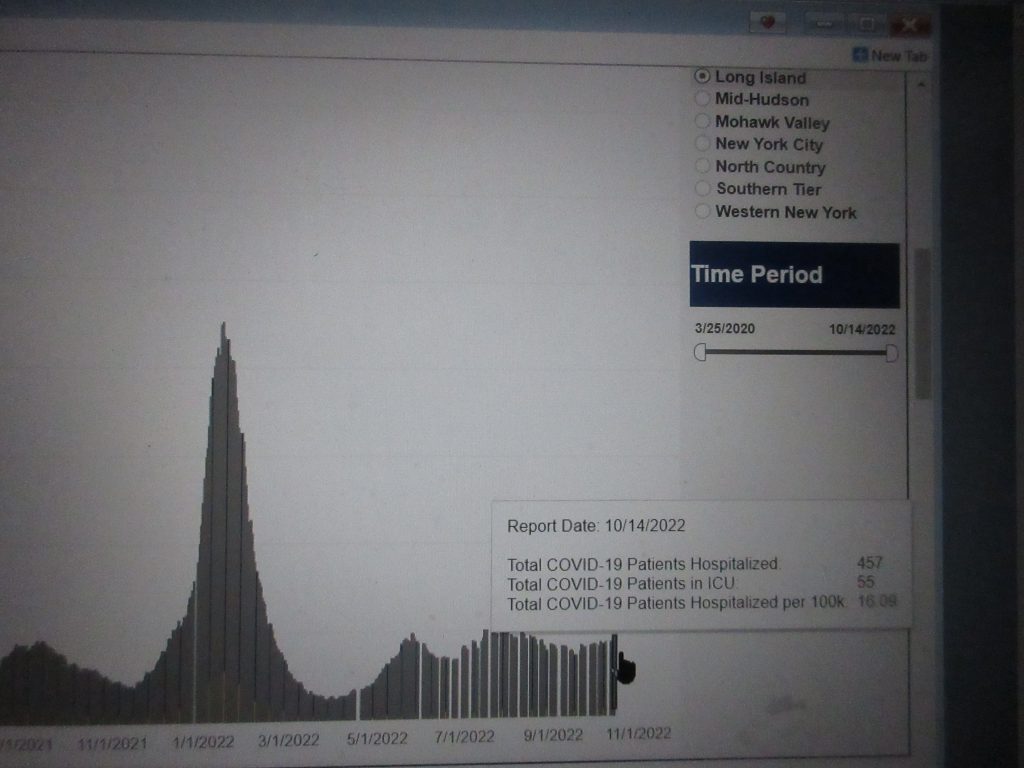
There is very preliminary data (n=1) showing BQ.1.1’s cellular mechanisms are getting close to Delta in regards to disease severity. We need more data, but not a great thing to see.
Bottom line
Cross-country comparisons are less straightforward than ever. However, subvariants are growing, and metrics around the globe are starting to reflect it. COVID-19 transmission is rising in the Northeast United States, which means it’s time to start riding the wave. If you were waiting to get your booster shot, now’s the time to schedule an appointment.
